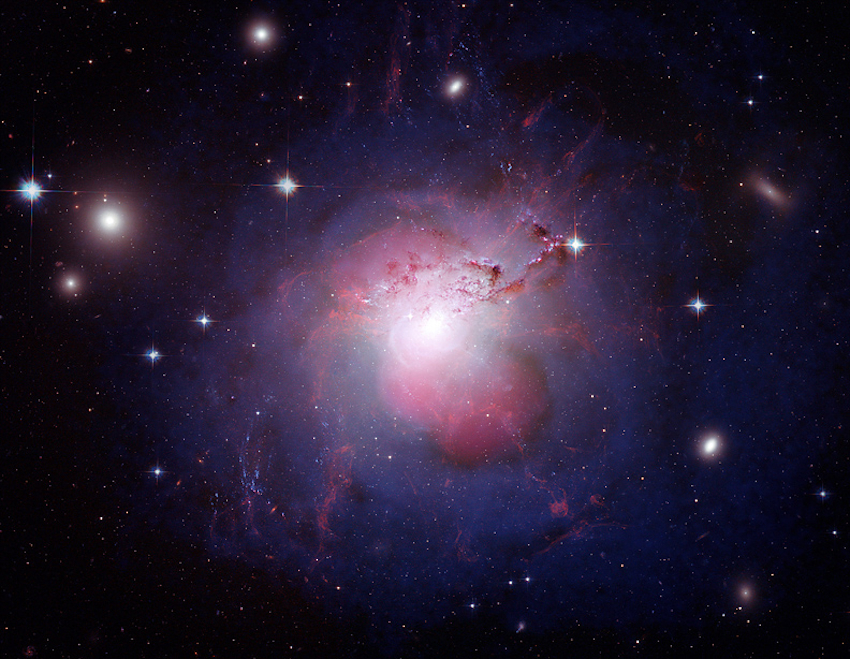
 Credit: X-ray: NASA/CXC/IoA/A.Fabian et al.; Radio: NRAO/VLA/G. Taylor; Optical: NASA/ESA/Hubble Heritage (STScI/AURA) & Univ. of Cambridge/IoA/A. Fabian
Credit: X-ray: NASA/CXC/IoA/A.Fabian et al.; Radio: NRAO/VLA/G. Taylor; Optical: NASA/ESA/Hubble Heritage (STScI/AURA) & Univ. of Cambridge/IoA/A. Fabian
Pushing Strings
For over a century, physicists have tried to construct an ultimate understanding of physical reality, a single "theory of everything" which would completely explain the way that matter and energy interact, from the tiniest quantum scale to the largest structures we know. A major sticking point is how to understand gravity, the weakest force we know, in the framework of the quantum physics which describe the weird reality experienced at incredibly tiny scales. String theories, so-called because they describe sub-atomic particles as vibrations of one-dimensional strings, offer perhaps the best hope of reconciling gravitational and quantum physics. But, at the present time we have no real evidence that such strings exist, and testing these theories has proven to be near impossible. Some string theories do predict the existence of new particles called axions. Axions are ultra-light particles similar to neutrinos, but much less massive and even harder to detect than neutrinos, since they should have nearly no capability to interact with photons or other "standard" particles. If axions could be proven to exist, this would help establish the string-like nature of reality, and might even provide the source of dark matter and dark energy, the mysterious components that dominate the Universe. Although nearly impossible to detect, in rare circumstances X-rays traveling through a large magnetic field could be converted into axion-like particles. This conversion might be seen through the study of X-rays passing through large clusters of galaxies possessing substantial magnetic fields. The image above is a multi-wavelength X-ray, radio and optical image of Perseus A, an active galaxy in the Perseus cluster of galaxies. The conversion of X-rays to axions would put a tiny but in principle identifiable signal in the distribution of X-ray photons from Perseus A. Observations with the Chandra X-ray Observatory and the XMM-Newton X-ray observatory, our two most powerful X-ray facilities, have not been able to confirm whether this conversion is happening. Scientists are looking forward to the powerful Athena X-ray Observatory, with its enormous X-ray mirror and exceptional energy resolution, to hopefully resolve this question. Athena is currently being developed by the European Space Agency with contributions from NASA, and is to be launched in the upcoming decade.
Published: August 28, 2021
<
HEA Dictionary ● Archive
● Search HEAPOW
● Other Languages
● HEAPOW on Facebook
● Download all Images
● Education ● HEAD
>

Each week the HEASARC
brings you new, exciting and beautiful images from X-ray and Gamma ray
astronomy. Check back each week and be sure to check out the HEAPOW archive!
Page Author: Dr. Michael F. Corcoran
Last modified Monday, 26-Feb-2024 17:11:11 EST


